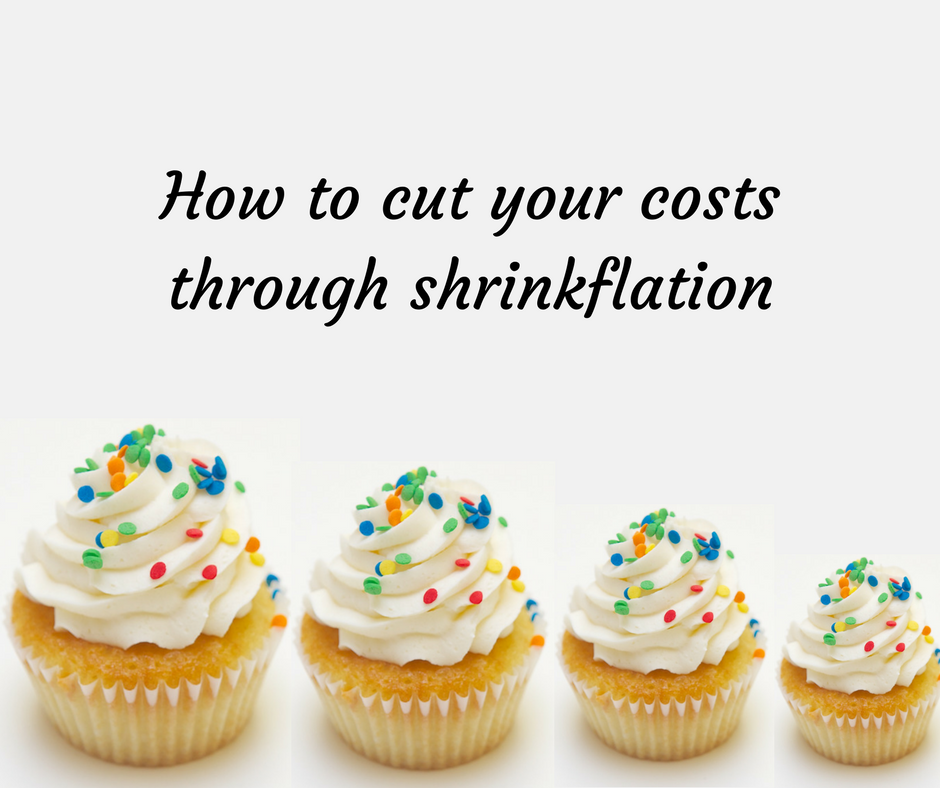
Last week, there was outrage across social media as McVities announced that in order to keep their costs down and pass on savings to customers, they would be reducing the quantity of Jaffa Cakes from 12 per box to 10. Outrage! See https://uk.finance.yahoo.com/news/jaffa-quake-shrinkflation-sees-number-jaffa-cakes-cut-10-box-123216564.html for the full story.
What is more outrageous is that retailers aren’t actually under any obligation to reduce the sale price. The manufacturer, after all, can only set a recommended retail price. Any increased profits from the reduced wholesale cost and the stagnant sale price will be passed on to the retailer. I think it’s highly likely that retailers will oblige McVities in reducing the sale price of Jaffa Cakes, and consumers will at least see some of the savings.
What is Shrinkflation?
The practice of cutting the volumes of products and keeping the sale price the same is known as ‘Shrinkflation’ – it’s essentially the customer getting less for their money but by cutting the volume rather than increasing the price. Faced with rising production costs, the producer is left with the stark choice of price increases or giving the consumer less product. Either way, the consumer loses out.
The theory is that fewer people notice when products get smaller than when they get more expensive. If you think that those chocolate bars were much smaller in your childhood, it may not be just because you’re getting bigger in comparison; they really could have been subjected to shrinkflation.
How to Implement Shrinkflation
If you decide you need to mitigate the effects of rising costs on your profitability, you may consider a form of shrinkflation for your product. You certainly would not be alone in this practice. The ONS has recently said that they have found that over 2,500 products have been reduced in volume over the last five years.
See http://www.bbc.co.uk/news/business-40703866 for more on this story
One way of doing this is like with Jaffa Cakes and reducing the product quantity. The product essentially remains the same but the volume is lower. The consumer gets the product they know and love albeit at a lower volume. Toblerone also did this back in 2010. Forced by the rise in VAT and pressure to keep the product priced at a level to suit the pricing policies of companies such as Poundland (where near everything is sold at £1), Toblerone created a shorter version that would mean a £1 retail price is somewhere near profitable.
Don’t remember Toblerone doing this? Well they did – read more at https://www.theguardian.com/business/2010/dec/17/confectionery-companies-downsizing-vat
I bet you do remember Toblerone changing the shape of their product though! When Toblerone decided to do another round of Shrinkflation in 2016, they changed the shape of the iconic chocolate bar. This time, the public did notice and it generated a whole lot of publicity for them and not all positive.
See http://www.itv.com/news/2016-11-08/toblerone-faces-backlash-after-size-reduction/ for some of the reaction to the news.
In this instance, people were not only getting less for their money, but their emotions had been played with too. The recognisable shape of Toblerone was now different and served as a reminder to consumers that they were losing out. I’d love to know what impact this round of Shrinkflation has had on sales of Toblerone and on owners Mondelez International’s bottom line. If both are down, then this won’t have proven to have been a smart decision.
Should you cut your costs through Shrinkflation?
The obvious answer to whether you should or should not reduce your costs through shrinkflation is a big fat no, but it’s not always that easy. With raw material costs rising at faster than the rate of inflation, something will need to give. Even if they rose at the same rate as inflation, you would need to either increase your product’s price or cut back on volume sooner or later, especially if a big chunk of your sales come from stores which have obvious implications for your pricing policy – Poundland for example.
What has been shown is that people notice less when you cut back on volume than when you change the iconic features of your product. Toblerone may have got away with it if they quietly reduced the dimension of their chocolate bar rather than change the pattern of the triangles.
Just remember that whenever you are considering whether you want to reduce the size of your product you need to check it will actually reduce your costs. Consider everything from raw materials not only for the product but also in the packaging, the cost of packaging and distribution, and the extra marketing activity you may need in place to manage the transition. If it all adds up to more than what you would save, then maybe a small price increase would be a better option.
What have you noticed has been the subject of shrinkflation?
Speak Your Mind